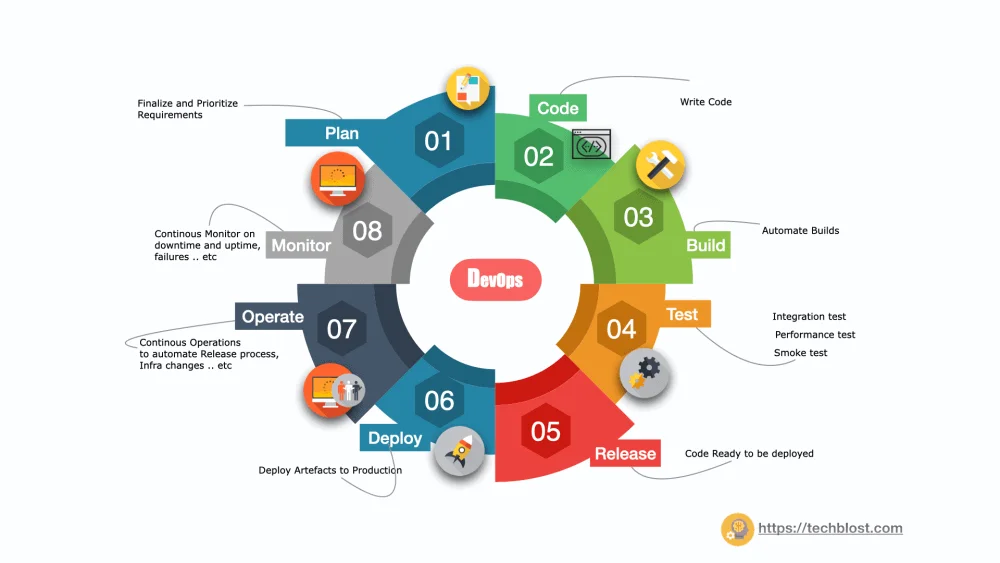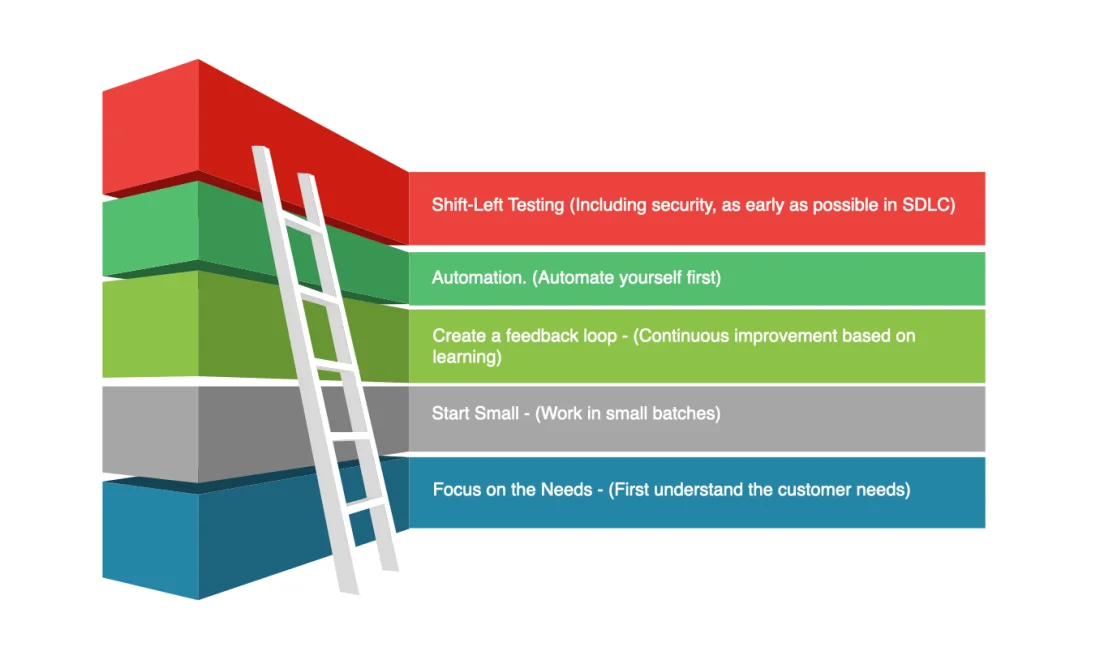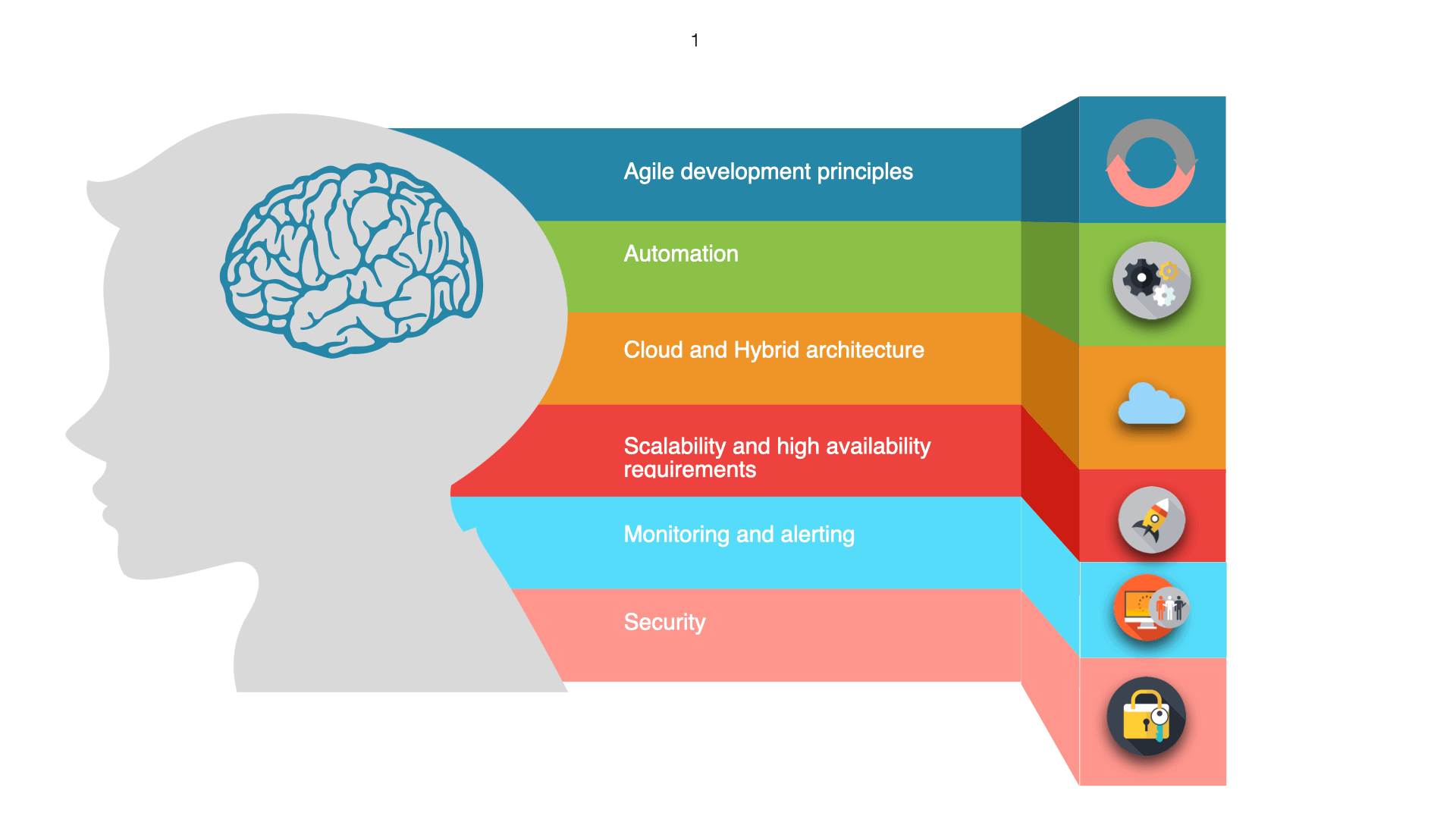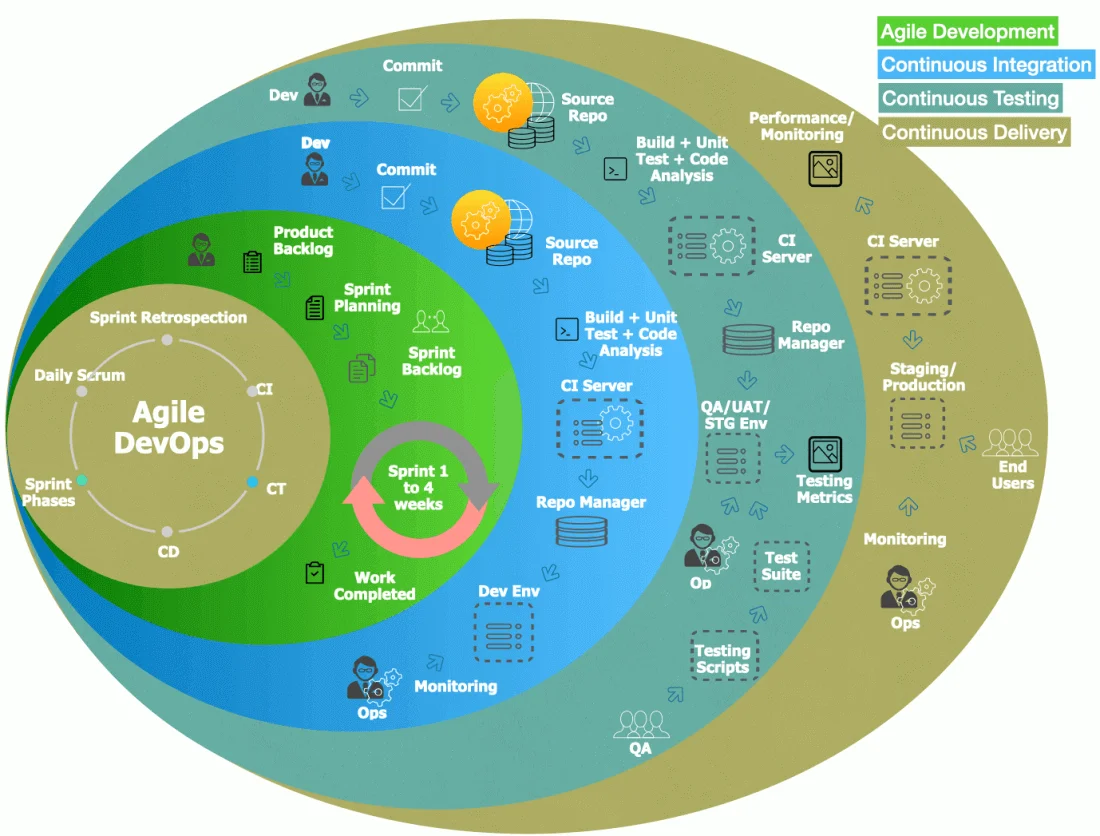
The successful implementation of DevOps has two major recipes: a cultural transformation and a suite of DevOps Tools that make a plan, code, build, test, deploy, operate, and monitor easy. Here is a comprehensive list of DevOps Tools used across the industry to implement DevOps strategies.
Refer the previous post for Part 3 – How to you implement DevOps in an organization.
In this article let’s focus on some of the technology that empowers leading engineering teams today. However, at present, there are so many tools floating on the DevOps ocean. So I have divided the tools based on the category and this will help you to get a bird’s eye view of the complete DevOps ecosystem. I better advise you to choose/decide on the right tools based on your project-specific requirements.
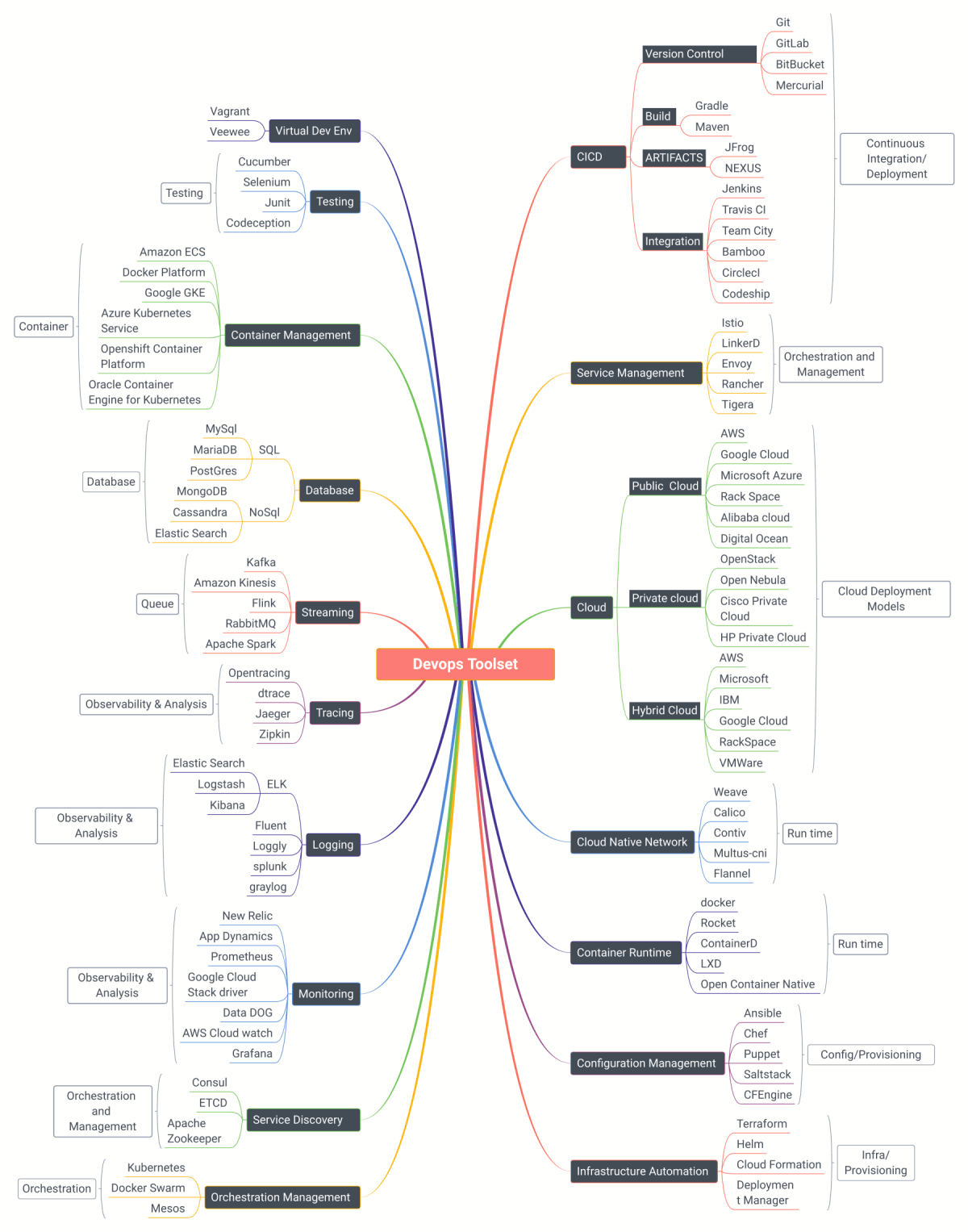
Container Runtime
Container runtime is explicitly required to execute containers and manage container images on a node. Today, the most widely known container runtime is Docker, but there are other container runtimes in the ecosystem, such as rkt, containerd, lxd, open container-native, and Hyper. With respect to Production, Docker is the most common container runtime used across the industry. Below are some of the container runtime which is available today.
Container Native Network
Container Native Network provides a common interface between container runtime and network implementation. The most widely used and popular CNI plugins are
Cloud
Nothing but single or multiple data centers are made up of computing and storage resources connected by a network. The data centers are virtualized into one shared pool of resources which can be intelligently and automatically orchestrated. Undoubtedly it will fit today’s dynamic business environment (Pay per use). Below are the cloud deployments Models and popular cloud provider list.
Public
Ideally, workloads with high-volume user-based applications or fluctuating demands might be better suited for the public cloud.
Private Cloud
Used by a single organization that is not exposed to the public and has more secure control over the environment and workloads.
Hybrid Cloud
A mixture of public and private clouds. Say an organization needs to secure data or applications on-prem and expose customer-facing applications with the public cloud this kind of combination – mix, and match can be achieved with a hybrid cloud.
Service Management
Service mesh abstracts away the network from your application, Say your workloads be on it Cloud or On-prem or Vm/Container services it assumes things are heterogeneous and it gives unifying abstraction to create services and obviously manage them at scale and reduces complexity with the business logic in the application side. Among a lot of options, these are the following service management options such as Istio, LinkerD, Envoy, Rancher, and Tigera. For more info about Istio refer to this article.
Virtual Dev Env
A popular model to consider when we are creating a local development environment. Tools such as Vagrant and Veewee will make the entire process easy and fast. Using these tools will provide certain benefits like
- Spin up and shut down the environment on a demand basis.
- Environment Consistency.
- Quick start on any new development projects or troubleshooting of existing issues.
CICD
CICD plays an important role in the delivery process more frequently with quality built-in. But It requires a strong culture change between teams even if you have a good toolset around you. Some of the tools that will help CI/CD ease can be referred below
Version Control
Build
ARTIFACTS
Integration
Configuration Management
Helps with deploying, configuring, and managing software on existing infrastructure that has already been provisioned. The major goal is to maintain these systems in a known consistent state. Similar to any other tools in the market the below tools are designed to solve specific problems.
Infrastructure Automation
Whether you’re using the public/ private /hybrid/ Multi-Cloud, the below listed are top cloud infrastructure automation tools that will come in handy. The following tool is designed to provide the servers, networking, and rest of infra like Storage, load balancers .. etc. Both config management tools can do some degree of infra provisioning, and Infra Automation tools can do some degree of configuration management. Choose the tools wisely which will fit your requirement.
Orchestration management
Container orchestration is all about Provisioning, scheduling, and managing containers at scale, mainly in a large environment. Platforms like Kubernetes, Docker Swarm, and KAAS .. etc each have their own specific methodologies for container management.
Service Discovery
Service discovery helps applications and (micro)services recognize each other within a network. The main objective of service discovery tools is, it will store the state of application health in its local store and help to register and de-register the active and inactive instances. Below are some of the Service discovery tools to refer to.
Monitoring
If you are setting up your DevOps infrastructure, You have to have better monitoring to observe how the app and infra are behaving, Detection and alerting when some things go wrong, Majorly useful to debug and gain insight on production issues. Consider below tools list and narrow down your options based on your requirements
Logging
In simple terms, logging refers to recording all kinds of event information to diagnose a system. An example would be access logs for a microservice application. These are significant because we want to know what is accessing our systems and when errors are triggered. So it is not a normal operating condition but it will help us to troubleshoot issues.
Tracing
Tracing is different from logging. Tracing will give you insight into the flow of application behavior. An example would be, Microservices architecture which involve multiple services that interact with each other. I suppose if we need to find which microservice flows are broken or have a latency of each step tracing will help you to get the insight. Some of the popular tools can be referred below
Streaming
Streaming is meant for processing infinite data sets coming in real-time continuously for 24/7 * 365 days. Say for example The data which comes quite quickly, we call it streaming data. It can be anything price feed or customer logs or sensor reading etc there are many options available (Refer Below) to stream data to data lake but you have to narrow down the streaming options based on your requirements
Container Management
Container management enables the development team the process of managing the creation/deployment/scaling of container-based apps efficiently.
- Amazon ECS
- Docker Platform
- Google GKE
- Azure Kubernetes Service
- Openshift Container Platform
- Oracle Container Engine for Kubernetes
Conclusion
The above list of tools has its own advantages and disadvantages. So you’ll have to finalize the tools based on your requirement (whether you need development overhead or infrastructure overhead). From my experience, you can start cloud-vendor-built tools that may provide the easiest way to kick-start your cloud-native journey.
Next Post: Conclusion
